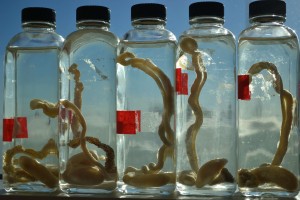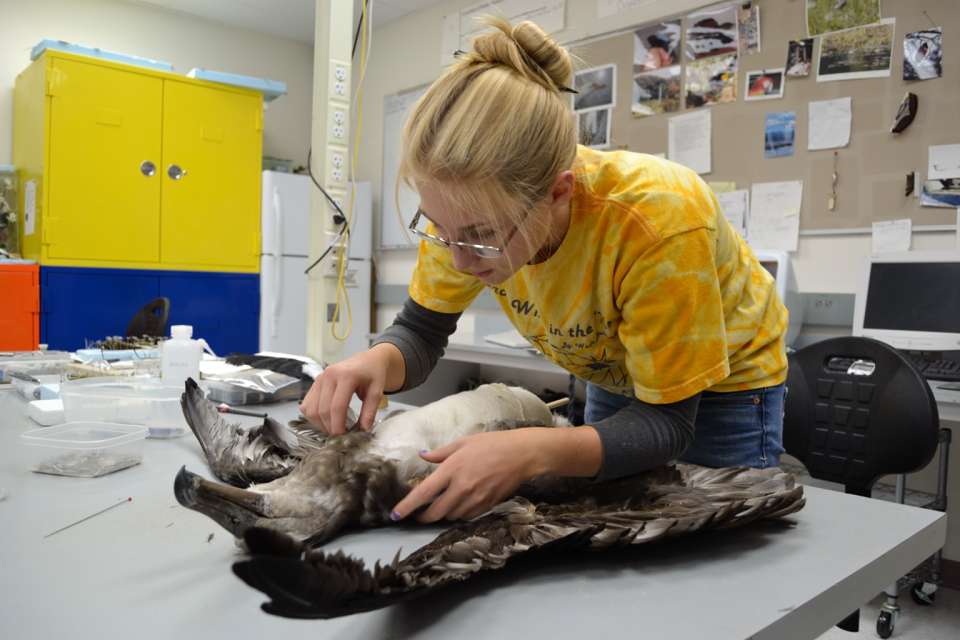A recent opinion paper in Science by a group of authors more concerned with human ethics than with science and biodiversity used a rather broad brush to paint scientific collecting in a negative light. Perhaps through their lack of intimate familiarity with biodiversity science, they made a number of errors in their effort to urge field biologists to stop collecting voucher specimens. Setting aside the issue of why a prestigious journal like Science would publish what is a rather weak contribution, the appearance of this piece does provide an opportunity to again help people understand why scientific collecting is important, why it does not pose a threat to populations of wild organisms, and why in a time of global change adding specimens to collections is now more important than ever. There is a substantial body of peer-reviewed literature on this topic; I will just summarize some of the main points here.
Category Archives: Bird collection
An avian Jonah experiment
The UAM Bird Collection is used for a lot of interesting research, and we always enjoy the resulting products, especially when researchers push back the frontiers of human ignorance in new and important directions. In this case, some researchers (see Haynes et al. 2013) arrived on the scene at the bitter end (for the birds) of what we might call an avian Jonah experiment. Yes, birds were swallowed by a whale. We were sorry to learn that, unlike Jonah, the birds did not live through the experience, but instead emerged later, much the worse for wear, from the wrong end of the whale.
Graphic image…
Duck Endowment
Our longtime friend and research associate Kevin McCracken has left the University of Alaska Fairbanks for a new position at the University of Miami. Before he left, his last specimen deposit into the UAM Bird Collection was a cryptic box of pickled bird parts. It was a duck dick dropoff.
Third report of the Alaska Checklist Committee
Formal Alaska Checklist Committee reports are published at 4- or 5-year intervals in Western Birds. The most recent report discusses 15 species and three subspecies added to the checklist and one species and one subspecies deleted from the checklist during 2008-2012, resulting in a net total of 499 species and 117 subspecies recognized at the beginning of 2013 as occurring or having occurred naturally in Alaska.
Bird collection helps extend science in nude dimensions
When we set up a Google Scholar profile for the collection about a year ago (see a note on this here and our methods in creating it here), we began to pay more attention to publications that had cited articles that the bird collection had directly contributed to in some way. You might think of these as second-generation contributions accumulating downstream from the direct use of this collection. Usually, these once-removed, downstream uses are papers on familiar subjects, contributions to the science of birds or to evolutionary biology and zoology.
But imagine our delight to come across a wonderful paper by Dr. Debby Herbenick and colleagues entitled “Erect Penile Length and Circumference Dimensions of 1,661 Sexually Active Men in the United States”.
Halloween!
Our favorite open house event is from 4-7 p.m. on Halloween evening. Everyone has loads of fun, and lots of people come through the lab to see what we do here. This year we had 887 visitors to the Museum, and it seemed like every one of them came in to see us (in costume) turn dead birds into museum specimens. Here are just a few of the memorable moments…
Wrap it up, we’ll take it! MRAP 2013-14
Thanks to early Museum Research Apprenticeship program (MRAP) student and world-class volunteer Barbara Logan, we kept up our weekly “skinning night” throughout the summer. And so it was with a considerable head of steam that we rolled on into the fall semester, adding five MRAP students to the fun. Preparing bird specimens and studying the morphology, anatomy, and other amazing attributes of birds is wonderfully stimulating. With MRAP students and volunteers, we’re preserving the birds of the present for the scientific research and education of the future. And we’re having a lot of fun in the process! If birds aren’t the most exciting things to study in the world, we missed the memo.
Severely overcrowded!
We house and oversee the development and use of the State bird collection, and this collection’s growth has severely overtaxed our capacity to properly house specimens. For example, our skeleton collection, which requires less stringent conditions for preservation, is largely inaccessible, and we’ve been forced to temporarily put lesser-used portions of the skin collection in plastic-wrapped cardboard boxes salted with mothballs because our specimen cabinets are too full to hold any more. Our taxonomic sorting began to get rather blurred some time ago as we crammed skins into every available space. As a rather heavily used research collection, this lack of appropriate space is a severe problem.


